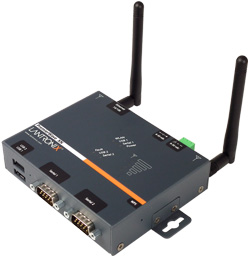A gyrotron is a form of electron tube or vacuum tube that is often referred to as a cyclotron resonance maser
due to the fact that one of its most frequent uses is in high-energy
physics research in cyclotrons. The advantage that a gyrotron offers is
that it can generate enormous amounts of radio frequency (RF) energy in
the megawatt
range at very small wavelengths of only a few millimeters, which is not
possible for standard vacuum tubes. The process can generate an
enormous amount of heat, which can be used to sinter ceramics or heat plasma
in fusion research reactors. Gyrotrons are also directly employed in
nuclear magnetic resonance (NMR) imaging for observing quantum
mechanical effects at the atomic level or in magnetic resonance
microscopy (MRI) for medical diagnoses.
The
principle behind how a gyrotron functions was first theoretically
composed in the late 1950s, when relativistic effects of electron energy
were being studied in cyclotrons for the first time. By injecting
streams of electrons into the electromagnetic field of a cyclotron with
an equal frequency, an effect known as negative mass instability was
observed. The electron stream would tend to bunch together from a
standard gyroradius or Larmor radius, causing the electrons to
decelerate and release kinetic energy in the process as millimeter wavelength radio frequency energy or radiation.
Early electron cyclotron resonance energies demonstrated the
potential to heat plasmas in fusion research, but the technology and
scientific understanding to create a gyrotron system that was reliably
capable of this did not become a mature science until the first decade
of the 21st century. As the science and technology advanced,
gyrotron applications split into high-energy megawatt systems for fusion
research, and low-energy 10- to 1,000-watt systems for NMR
spectroscopy. Where the devices produce terahertz
radiation in the 100 gigahertz to 1 terahertz range, they are used in
industrial applications such as plasma diagnostics and high-temperature
heating of ceramic compounds. Research in Japan has also increased the
efficiency of mid-range to high-power gyrotron devices by 50% as of 1994
by using an integrated mode converter to more efficiently convert
electron beam energy to heat.
Since a gyrotron is a form of Microwave Amplification by Stimulated
Emission of Radiation (MASER) device or free electron laser that
generates electromagnetic fields, it has some similarity to the
principle behind how a standard microwave oven operates. A portable
gyrotron can be operated in a range of frequencies typically from 2 to
235 gigahertz, and this makes them useful devices for non-lethal weapons
systems that the US military refers to as Active Denial System (ADS)
technology. An ADS device based on a gyrotron can be targeted against
human beings with the effect that it heats up water molecules under the
skin without causing permanent damage to tissue. This acts as a
deterrent field that has theoretical applications in crowd control to
prevent riots, or to keep enemy soldiers or civilians from approaching
military installations and downed aircraft.
Just Hit The Share Button It Doesn't Bite Your Finger
Subscribe to:
Post Comments (Atom)
-
Subtotal (Functions) The Subtotal function allows you to set up a calculation in your worksheet. Then, by filtering the data, the same...
-
Printing Options for Specific Pages You may not always want to print your entire Word document. There are times when you may want to p...
-
Aptoide is an open source approach to repositories in Android . With Aptoide you can create your own repositories of applic...

No comments:
Post a Comment